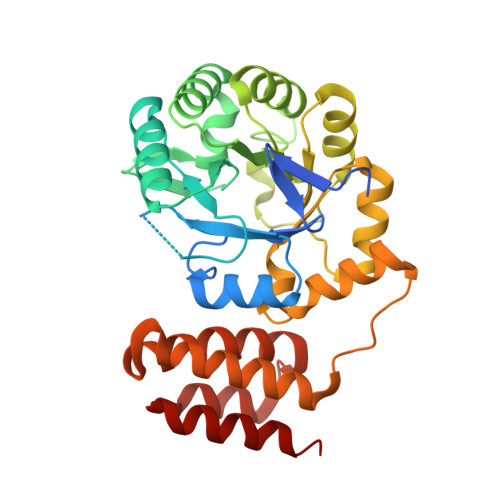Unveiling structural and functional divergences of bacterial tRNA dihydrouridine synthases: perspectives on the evolution scenario.
Bou-Nader, C., Montemont, H., Guerineau, V., Jean-Jean, O., Bregeon, D., Hamdane, D.(2018) Nucleic Acids Res 46: 1386-1394
- PubMed: 29294097
- DOI: https://doi.org/10.1093/nar/gkx1294
- Primary Citation of Related Structures:
6EI9 - PubMed Abstract:
Post-transcriptional base modifications are important to the maturation process of transfer RNAs (tRNAs). Certain modifications are abundant and present at several positions in tRNA as for example the dihydrouridine, a modified base found in the three domains of life. Even though the function of dihydrourine is not well understood, its high content in tRNAs from psychrophilic bacteria or cancer cells obviously emphasizes a central role in cell adaptation. The reduction of uridine to dihydrouridine is catalyzed by a large family of flavoenzymes named dihydrouridine synthases (Dus). Prokaryotes have three Dus (A, B and C) wherein DusB is considered as an ancestral protein from which the two others derived via gene duplications. Here, we unequivocally established the complete substrate specificities of the three Escherichia coli Dus and solved the crystal structure of DusB, enabling for the first time an exhaustive structural comparison between these bacterial flavoenzymes. Based on our results, we propose an evolutionary scenario explaining how substrate specificities has been diversified from a single structural fold.
Organizational Affiliation:
Laboratoire de Chimie des Processus Biologiques, CNRS-UMR 8229, Collège De France, 11 place Marcelin Berthelot, 75231 Paris Cedex 05, France.


















